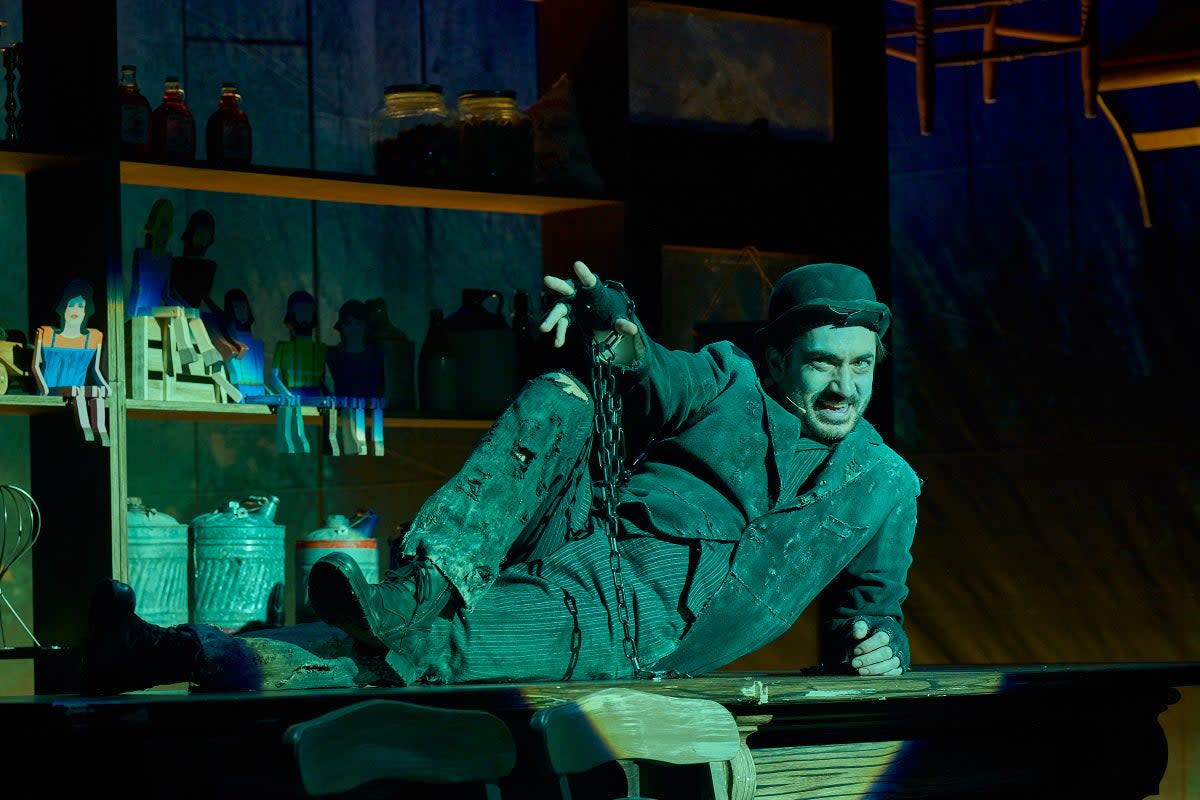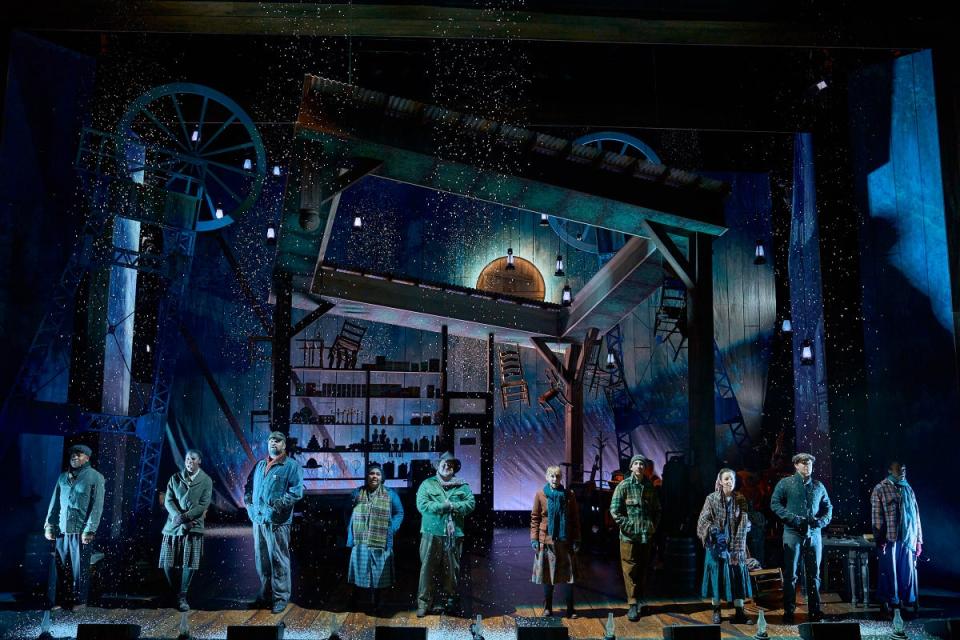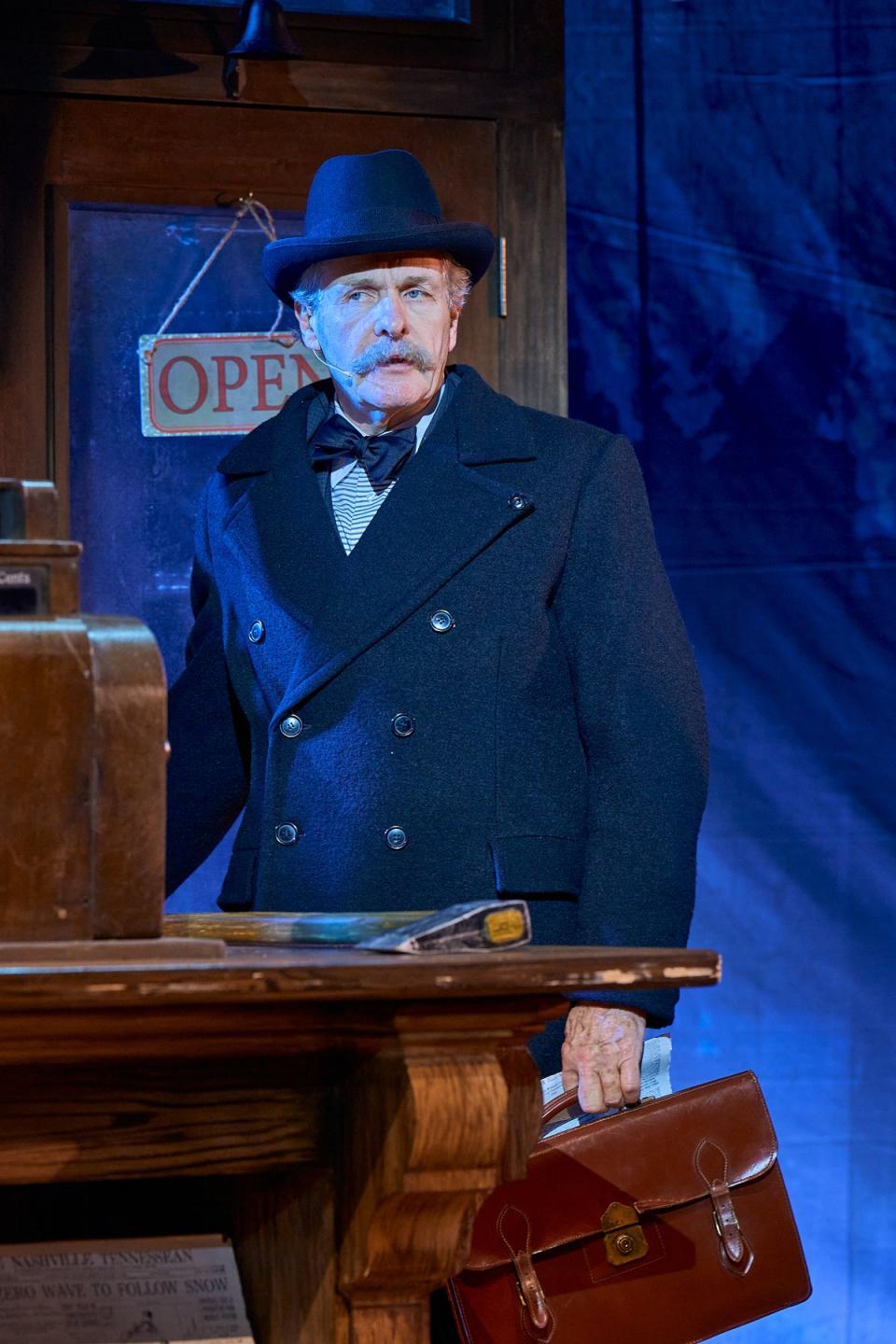Dolly Parton’s Smoky Mountain Christmas Carol review: carried with glee and gusto

Though Dolly Parton is a goddess, my hopes weren’t high for her musical transposition of Dickens to depression-era Tennessee, which started life as a 40-minute “presentation” at her theme park, Dollywood. More fool me.
Hardscrabble Appalachian life in 1936 has clear parallels with Victorian poverty, and Dolly and Dickens share a mile-wide sentimental streak. Her new songs here are all good and sometimes excellent, and the show is carried with glee and gusto by the tight ensemble and hoedown band around Robert Bathurst’s gruffly southern Scrooge.
There’s a stronger Christian tinge to the story than usual but also a strong argument for labour – in this case, coalminers – unionising to fight predatory capitalism. Which is odd, given that this is a sincere but commercially motivated attempt to push the Parton brand back into musical theatre – after 9 to 5, a West End hit of course – where her camp appeal plays well. But that’s Dolly: always the same, always surprising.

At the start, her recorded voiceover tells us to turn off our phones and wishes us a merry Christmas full of “luuurve”, and then we’re off. It’s all pit accidents, teenage pregnancies, and moonshine-induced blindness in the backwater of Morton’s Hollow.
Scrooge’s backstory has a harder edge here. Brutalised and lovelorn in young life, he betrays his kind protector Fustbunch (Fezziwig in the original) and then his mentor in greed, Marley, who owns the town and the mine. After a series of disputes which leave several miners shot, Marley signs over his business to his protégé. He thinks it’s temporary. Big mistake.
Among the supporting cast, Sarah O’Connor and Carole Stennett stand out as both actors and singers. The fiddler Corey Wickens, fronting a tight band rooted in Appalachian folk, plays the Ghost of Christmas Future entirely through her instrument, dressed in a coat that Stevie Nicks might envy.
The urbane Bathurst, however, is more of a grumpy uncle than an outright misanthrope. Tall and austere with a swallowtail cavalry moustache, he looks rather like Neville Chamberlain. Though Scrooge and Marley are condemned, the uncritical celebration of poor white southerners in the 1930s as universally kind and wholesome is hard to take, even from an ethnically mixed cast. Scott Davis’s set of oil lamps and timbers is basically just a frame for the action.

Maybe I’m being Scroogeish. There are great numbers here, from the revivalist Hell to the sweetly simple Three Candles. The three men who created this Christmas Carol with Parton, and the director and choreographer Alison Pollard, are not visionaries, but professionals who know what’s needed. The arc of the story works its remorseless power.
The show was developed in Massachusetts and first performed in Boston. This London production at the acoustically superior but dramatically un-atmospheric Queen Elizabeth Hall is clearly testing the waters to see if Parton’s fusing of Scrooge’s story with her own heritage has international appeal.
I’m pretty sure this imperfect tryout will be further refined into a greater triumph. Our heroine’s history of conquering new realms suggests it will be so. Hello Dolly: welcome back to the world of musicals.
Queen Elizabeth Hall, to January 8; southbankcentre.co.uk


